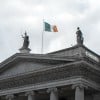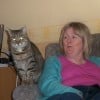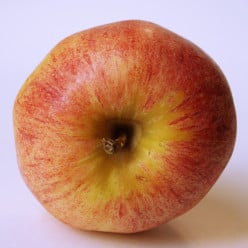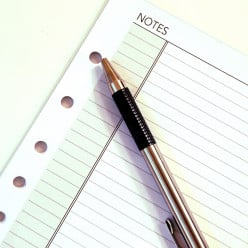Census Ireland 2011 10 April 2011
When we fill in our census forms tomorrow we will not only be learning more about the state we’re in now, we will also be leaving a valuable historical legacy for future generations, writes ROSITA BOLAND
YOUR ANCESTORS ONCE filled out their census forms entirely in writing, and if you look up online the censuses of 1901 and 1911 you might experience the frisson of seeing their handwriting. These days the only part of the form that you’re not asked to fill in by drawing a line in a box, or by writing in capitals, is the one that accommodates your signature. But the reasons for collecting census data have remained the same down the generations: to identify how many of us there are, where we live and what we do, so the Government can plan for the future.
“The census is important because we pick up the population at local level. And you know where the children are,” says Aidan Punch of the Central Statistics Office. “It’s also very good as a source of information on minorities.”
The first results from tomorrow night’s census will be available as early as July. Punch predicts cautiously that we will see the population officially rise to 4.5 million. “We know the births and we know the deaths, but what we don’t know are the migration figures.” Another statistic that will become clearer will be the number of vacant homes.
The census costs €60 million over five years. This year 17,000 people applied online for one of 5,000 jobs as enumerators. “We had to close the site after 48 hours,” Punch says, “because we couldn’t have processed any more applications.” The first to apply got the posts. They each receive €2,200, plus travelling expenses for those who need a car to distribute forms in their areas. This year, for the first time, enumerators have all been given mobile phones to help them deliver and collect the census documents.
This year the form has two new questions, numbers 15 and 18: “Do you speak a language other than English or Irish at home?” with an additional question asking how well you speak English, and “How is your health in general?” The five options to answer this question are very good, good, fair, bad and very bad. “We know that looks like a subjective question, but it’s still going to give us useful information. It’s about how you yourself rate your health.”
One question has been dropped since the last census, about whether we devote any time to voluntary work.
Filling out the form is a legal requirement. This weekend’s is the 26th census to be carried out in the Republic. The first took place in 1821; data collected from the third, in 1841, became key evidence of the effects on the population of the Famine, soon afterwards. The census continued to be taken every 10 years until 1911, after which the Civil War imposed a break: there was no census in 1921. It began again, in the Irish Free State, in 1926. Since 1951 the census has been conducted every five years (although 2001’s was delayed until 2002 because of foot-and-mouth disease).
In Ireland, unlike many other countries, census forms are still filled in on paper rather than online. “The paper system still represents best value for money,” says Punch. He points out that Ireland focuses the collection of its data on one specific night; in Britain, for instance, people have a much longer window of time to complete their forms. “If we afforded people an internet option 1.6 million households accessing the site at the same time would crash the system. It would also cost much more, and take much longer to process the data.”
Questions, questions: Census facts and figures
The first census was in 1821. There was one every 10 years thereafter until 1911; the Civil War then imposed a break; the census started again in 1926; since 1951 the survey has been planned for every five years.
Sunday is census day as it is thought to be the day when most people are at home.
Forms are available in Irish and English.
There is no civil-partnership option listed this year in the marital-status question, as legislation had not been passed when the forms were being planned.
Question 12, “What is your religion?”, has been criticised because of its implication that everyone has a religion, although there is a “no religion” option. “If you break continuity with the past it becomes a completely different question,” says Aidan Punch of the Central Statistics Office. “We’ve been doing a religion question since 1871.” The no-religion option is selected second only to Catholic.
Question 13, for women only, asks “How many children have you given birth to? Write in number of children born alive.” This has been criticised for excluding stillborn babies. “The purpose of the question is to monitor fertility into the future,” says Punch.
Question 27, “How would you describe your present principal status?”, does not take into account State-funded schemes such as those run by Fás, which have 57,000 trainees alone. “It’s not a perfect question,” says Punch. “There are people who have more than one status. They might have a part-time job and be in the home the rest of the time. But that question gives information about unemployment black spots.”
It is a legal obligation to complete your census form.
You can see the 1901 and 1911 censuses online at census.nationalarchives.ie. Also, ukcensusonline.com has census records from 1841 to 1911 for those trying to find ancestors in Britain. The Northern Ireland census data is collected at the same time as the census in Britain.
"Apparently my great-great-grandmother was a dressmaker to Queen Victoria"
LIKE THE rest of the country my great-grandfather James Ingle filled out his census form on Sunday, March 31st, 1901. It’s a tiny thing, his signature at the bottom right-hand corner of the form, but when I saw a scan of it on the census website I was unexpectedly moved.
Back then James, who was 24, lived in the top half of a house in the long since demolished Tunny’s Cottages in Ringsend, Dublin 4, with his 29-year-old wife, Marcella, and their three children: five-year-old Edward, four-year-old James and one-year-old Charles, later to be my grandfather.
In an era when overcrowding was the norm, five people in a two-roomed flat was a relatively comfortable set-up. James described himself as a general labourer; Marcella was a “do”, for domestic. It was a relief to note that none of them was an “idiot”, “imbecile” or “lunatic”, three of the options listed in the form’s final column. Marcella and the children were noted to have been born on Ringsend’s Thorncastle Street; James wrote that he was born in England.
James filled out the census form again in 1911. By then he had moved marginally up in the world, across the Dodder to a two-up-two-down at 50 Penrose Street, still in Ringsend. He was a “van driver”, meaning he drove a horse and dray.
On the census website, one of the busiest in the country, you can look not only at your own family’s details but also at those of their neighbours. A widow called Clare lived next door to the Ingles; one of her children is described as a nurse child. Catriona Crowe, of the National Archives of Ireland, explains that this term loosely means foster child. “Sometimes the census forms provide more questions than they do answers,” she says.
My main question is how my English great-grandfather James came to settle in Ringsend. Curious, I rang my Uncle Christy, now 82, who told me that James had been the black sheep of a “well-to-do” London family. Apparently a newsagent’s in Middlesex still bears James’s family name. My great-great-grandmother is reckoned to have been a dressmaker to Queen Victoria, a tantalising genealogical titbit I will follow up.
It seems that the adolescent James didn’t conform to the lofty aspirations of his parents. While his brothers studied medicine he was forced by the family to join the British merchant navy at 17. As the story goes, his boat foundered in Dublin Bay in the late 1800s but James managed to navigate the vessel into the harbour at Ringsend, where he jumped ship. A couple of years later he married Marcella, never returning to England again except to bury his parents.
Even this scant bit of research has changed my view of the census. My own little family had planned to be out of the country on Sunday night. Those plans have now changed. I don’t want to miss out on leaving our own trail of clues for those yet to come.
Róisín Ingle
"Only in Ireland would you not be surprised to find out you were related to the archivist tracing your family"
I’M IN a farmhouse in the parish of Kilmurry McMahon in west Co Clare. Sitting by the old range, my 94-year-old grandfather, John O’Connell, is looking on as I download the 1901 and 1911 censuses to my desktop. For the first time since he was a child probably, my grandfather is able to look at the handwriting of his grandfather Peter, who was head of the O’Connell house at the turn of the 20th century.
The O’Connells made their home here about 200 years ago and have stayed ever since. The 1901 census also contains the entry of my grandad’s father, Matthew, who was only 18 at the time. Incredibly, my grandad knew all of the inhabitants listed in the 1901 and 1911 censuses, and thus is a living link to my online family history. For example, while the census told me that the family farmhouse had two rooms and was thatched in 1901, my grandad was able to tell me who thatched it, how much it cost and when the roof was replaced with slate.
Scanning the census for my family was like a game of FarmVille in reverse. The search has inevitably thrown up questions. Given that the farm is in the Kilrush area of Co Clare, which was decimated during the Famine, how were the O’Connells able to remain on the land, seemingly unaffected? And where did they come from in the first place?
In my search for answers I had the help of Catriona Crowe at the National Archives. “Okay, so what’s your surname?” she asked when we met. “O’Connell,” I replied. “And the townland?” “Kinlea, in Clare.” “Goodness,” she said, “We may be related!”
It turns out that Crowe and I are in fact distant relations. Only in Ireland would you not be surprised to find out you were related to the archivist who’s helping you trace your family history.
On one side of my family a great-aunt living in Galway helped me trace both my great-grandmother and great-great-grandmother, who came from the same parish as my grandfather. What was remarkable among my ancestors was the fact that marriages took place within such a confined area. Marrying someone from Ennis, say, would have been thought exotic.
On the other side of the family the details are more sketchy. I knew that my grandmother was a McCarthy from Kildysart and that my grandfather was a Cavanagh from Valentia Island, in Co Kerry. I think I may have located my grandmother’s mother, a woman called Anne Forde, who was 74 in the 1911 census, although this requires further investigation. On my grandfather’s side, some Valentia Island records are not held online, but, through parish records and online Mormon databases, I found out that this side of the family originated in Streete, Co Westmeath, where Archibald Cavanagh was born in 1784.
He died in 1847, during the Famine, suggesting perhaps that my ancestors weren’t immune to this calamity after all.
Brian O’Connell
"Seeing my great-grandfatehrs' handwriting on the returns made them indisputably real"
ALL FOUR of my grandparents were long dead by the time I was born, so the family lore that came my way about them was filtered through another generation. I knew even less about my great-grandparents, not even their names. The online census opened doors into the past and prompted me to ask my parents questions.
My mother’s people, Comers, came from a townland in north Co Galway called Knockauns East. In 1901 there were three people listed in the house: my great-grandfather Thomas (aged 58), his daughter Maggie (20) and his son Luke (18). Luke, described as a farm labourer, was my grandfather. Thomas Comer, a farmer, was a widower by 1901. My great-aunt was described as a “general servant”. She was the unmarried daughter who stayed home to keep house for the men.
A decade later the same three were still in the house. My grandfather’s rank is given as a farmer’s son, as he was the one who would later inherit the farm. Thomas recorded that five children were born to the marriage, four of whom survived. Only the mother was meant to record this information, so the enumerator has crossed it out, but the figures are still clearly visible. My mother has told me that Honour, my great-grandmother, died in childbirth, along with her fifth baby.
My father’s people were from the townland of Farranstack, Lisselton, Co Kerry. In 1901 11 people were recorded in the house of my great-grandfather John Boland (43), described as a farmer. Along with his wife Bridget, there were six children, including the oldest, my grandfather Patrick (16).
In 1911 five of the children were still at home, including my grandfather. As in 1901 11 people were in the house that night. They included two visitors, Katherine Kennelly (21), who would become my grandmother, and her brother. My future grandmother is listed as a schoolteacher, a profession she kept all her life, raising two boys alone on her salary when my grandfather died of scarlet fever early in their marriage.
Seeing my great-grandfathers’ handwriting on the returns made them indisputably real. I will think about them tomorrow, and also wonder who will one day read my own return.
Rosita Boland
Town and country: The enumerators
Seán O’Hanlon, North Dublin
“I have about 380 dwellings to cover, all of it on foot, but a few of those would be nursing homes, where there might be up to 60 residents. I’ve had a surprisingly good response at the doors, but I’m glad the election is out of the way. So many people had chips on their shoulders, and they wanted to vent on the doorsteps. As an enumerator you’re seen to be part of the system. It can be hard to get people to open their doors, even when they’re home. Particularly old folks, who are afraid to open the door to a stranger. And foreign nationals, who think that the Central Statistics Office is part of a Big Brother kind of government.
“Even in a small area there is a fair mix in terms of age and material wealth. I’ve had some pleasant chats on the doorsteps; once or twice I’ve been there half an hour. People are helpful. They’ll tell you, ‘Oh, there’s nobody in that house any more because they died and their relatives are selling it’. There’s always someone around to help you and tell you when is the best time to find people in.”
Mary Cullivan, East Co Cavan
“Im in the car all the time. There were about 403 places on my register, and I’ve had to add about seven extra new ones: granny flats at the rear of house, newly built houses that weren’t on the map I was given. My area is roughly 30km wide and 50km long.
“It sounds silly, but my biggest challenge so far has been dogs. One of the questions I was asked at interview was how I felt about dogs. I said, ‘No problem, I have three at home.’ Then I arrived at a house where no one was home except a lovely Labrador in the garden. He let me go almost as far as the door and then started growling. I don’t think my high-visibility jacket helped. I just pegged it back to the car as fast as possible. There’s quite a few Alsatians round these parts. If I see a dog I’ll check for a mailbox on the gate to leave my card, and if I don’t see one I’ll sit in the car and beep the horn.
“The other challenge is that some Cavan back roads aren’t great. They’re narrow and have potholes. The census is an important event and I’ve enjoyed it, especially the social contact. I’ve been offered everything from tea and soup to KFC – the family had just came back from the takeaway, and invited me in.”our Uk census day was 27th March. It is suggested that it will be the last one which is a loss for historians of the future.
I am working for the census and departmental regulations forbid me from describing how it really is. Put it this way I have not been hubbing or on the forums much
Related Discussions
- 18
My first baby in April 2011, What is your parenting style?
by Ruben Rivera 15 years ago
Yes my first baby and obviously some anxiety kicked in already. I tell my wife I will raise him/her (don't know gender yet) military/Marine Corps style hehe. I guess that could backfire.What is your style? are you the kind "my way or the highway" or do you allow any discussion? or a...
- 27
Family trees / genealogy
by Audrevea 14 years ago
Has anyone got any interesting tales re their family tree? I've been tracing mine for a while now and the secrets are starting to be unveiled.There was a new Who Do you Think You Are series using American celebrities but I didn't get to see it when it screen here b/c of my schedule. Anyone know...
- 13
If you could meet one ancestor of yours, who would it be?
by Aurelio Locsin 13 years ago
If you could meet one ancestor of yours, who would it be?
- 19
What is the correct term? British or English? Scot or Scottish?
by meow48 14 years ago
What is the correct term? British or English? Scot or Scottish?okay, this may be rather silly, but to the folks from england, do you prefer to called British or English???? The same question to those from Scotland, is it Scot or Scottish?? thanks for your participation ahead...
- 15
Is there a custody, divorce lawyer in the house?
by goodfriendiam 16 years ago
Is there a custody, divorce lawyer in the house? And if so, may I ask you a few questions?
- 187
Rude Questions about the number of children you have
by Merriweather 7 years ago
At the drugstore the other day an older woman was talking to my year-old son while he sat patiently in the cart (and he needed a distraction, so that was fine with me). My other three children wandered up and this woman said to me, "My land! How many are there?" as if I had a...







